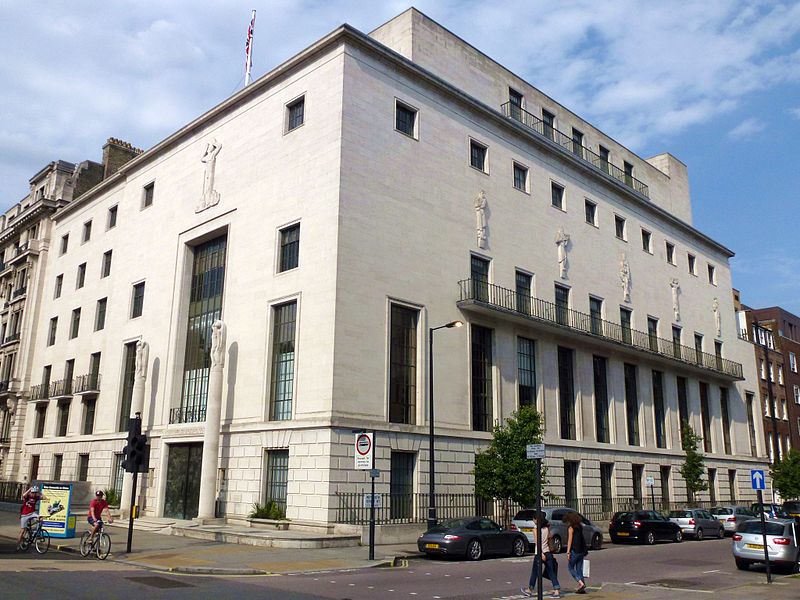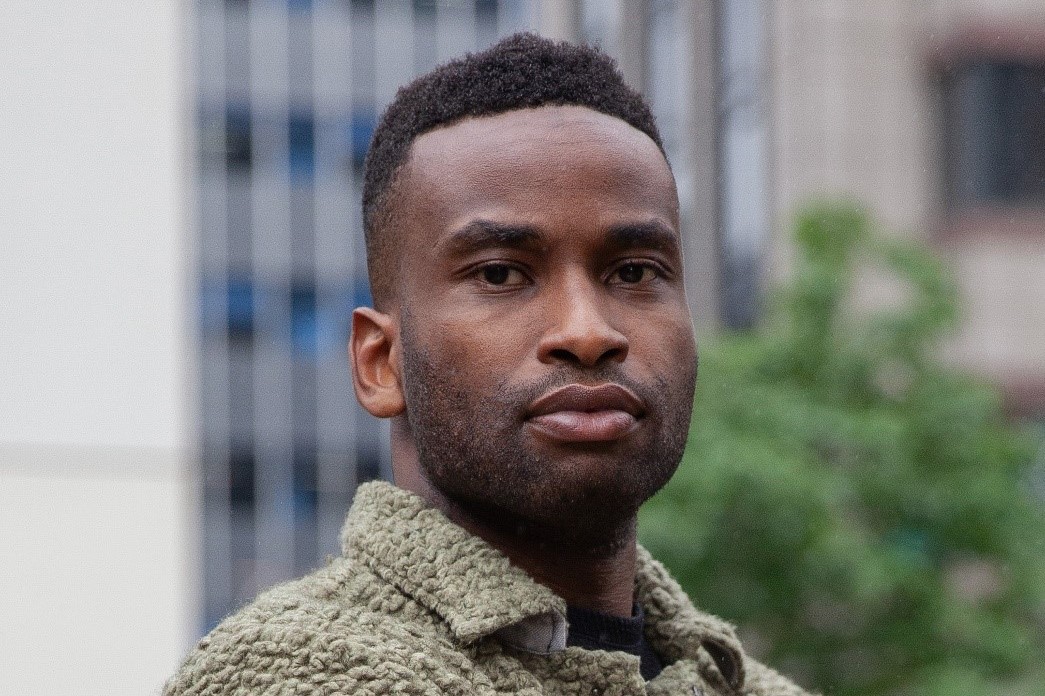Oki, who becomes the intuition’s first Black president and its youngest, aged 32, said in a letter to the profession on his first day in office that previous attempts at getting the government to legislate on retrofit had not been successful.
He said in the letter that, as RIBA president, he would ‘keep this pressure on’ as part of calls for a ‘fundamental shift’ for architects to address the climate emergency.
‘The challenges posed by the climate emergency are undeniably urgent,’ said Oki. ‘The built environment accounts for around 37 per cent of global carbon emissions. As RIBA president, I pledge to be a steadfast advocate for decarbonising the built environment.’
Advertisement
He continued by saying that architecture ‘must lead the charge in promoting innovative design principles, energy-efficient solutions, and the use of sustainable materials’ as well as ‘engaging with decision and policy-makers’ to reduce carbon emissions from buildings.
That includes demanding ‘a robust strategy for minimising the carbon impact from buildings’, which, Oki said, ‘remains a priority for me and the RIBA’.
We must tear down the barriers wherever they exist
As well as the climate emergency, the new RIBA president demanded greater levels of diversity at junior and senior levels, saying the industry was ‘far from representative’ and had significant ethnicity gaps.
He wrote: ‘I will champion measures to make architecture fairer, more welcoming and inclusive. We must tear down the barriers wherever they exist [and] We must ensure that anyone with talent can aspire to join us and succeed, regardless of who they are and where they come from.’

Source:Cmglee
RIBA Portland Place
Oki takes on the role a year after his election victory, when he beat architect and author Sumita Singha and Jo Bacon of Allies and Morrison in the second round of voting.
Advertisement
The architect, who works at construction consultancy Mace Group, was elected on a platform of radical reform and was widely seen as the candidate representing architectural workers and the profession’s grassroots.
He previously worked at Grimshaw Architects, where he founded and chaired the practice’s multi-ethnic group and allies network.
Alongside a new RIBA president, the institution’s council also begins anew with several Oki allies elected in July as part of a Just Transition Lobby movement backed by groups such as Future Architects Front (FAF) and Section of Architectural Workers (SAW) – groups which also backed Oki’s election last year.
In a statement to the AJ on the new president, FAF described Oki’s arrival as a ‘historic occasion’, saying: ‘He emerged from a hustings facilitated by unions, climate activists, and grassroots organisers to lead a successful election campaign with widespread professional appeal.’
‘We finally have a president with the mandate to represent architectural workers’
FAF continued: ‘In terms of what this means for the future of RIBA, the potential is enormous: we finally have a president with the mandate to represent architectural workers; we have a president whose first priority will be the RIBA rather than their own practice; and we have a president aligned with the social and ecological goals of a Just Transition.’
The group admitted that while there will be ‘an enormous uphill battle with an institute as large and old as the RIBA, Muyiwa will find himself well supported to advance radical change in a historically inert organisation’.
At 32, Oki is the youngest RIBA president since the role was established in 1835.
Newley elected councillor Funmbi Adeagbo told the AJ that, 'Like Muyiwa, I’m also an employee, so I have a keen interest in the working conditions and the everyday challenges we face as architects in practice.
She added: 'As architects, we cannot turn a blind eye to the impact our work has on the environment and the very fabric of society. The world is changing and the RIBA needs to be agile and adapt to remain relevant.
'In my opinion, the RIBA is a charity that exists not just to offer value to its members but also to all communities in which our work as architects intersects. To be blunt, that's pretty much all of society. There is only one planet Earth.'
Simon Allford, the outgoing RIBA president, is co-founder and director at AHMM. He told the AJ he would stay on the institution’s board to oversee a planned ‘comprehensive refurbishment’ of the RIBA’s 90-year-old George Grey Wornum-designed central London headquarters.
AJ Retrofit Live takes place on Wednesday September 27 in the City of London

Source:AJ
Muyiwa Oki outside the institute's 66 Portland Place, London, with Bartlett whistle-blower Eleni Kyriacou at the 2022 RIBA Stirling Prize ceremony
RIBA president Muyiwa Oki:
Today, I start my two-year term as President of the Royal Institute of British Architects.
Since 1834, RIBA has supported ‘the general advancement of Architecture’, and now it is a global organisation representing 52,000 members around the world.
This moment is profoundly significant to me – and others too, I’m sure. I am the youngest and first Black person to hold this esteemed position in RIBA’s 189-year history.
I stood for election to represent the voices of all, including those who feel disenfranchised and underrepresented. But also, because I believe in architecture – that it is a force for good.
I also believe that a fundamental shift is needed for architecture to demonstrate its relevance and importance in today’s world and inspire the next generation of architects.
I am conscious that this is a critical time to take on the role of RIBA President, as we grapple with huge, global challenges: the rising cost of living, widening social inequality and, of course, the climate emergency.
Change is not happening at the scale and pace needed. As architects, we are stewards of our planet's future and I believe it is vital that every architect sees themselves as an agent of change. An immense collective effort is needed.
While we should respect the past, we must not be confined by convention. We can and must break away from traditional patterns where these no longer fit. We must go further and faster on innovation and change, considering the scale and complexity of the challenges in society.
Excellence in design remains at the heart of architecture, but skills such as leadership, collaboration, and the ability to harness new technologies, are equally important to the future resilience of the profession. We must learn to blend creativity and ingenuity with technology to create spaces that can withstand the test of time and positively impact the lives of people living today and in the future.
The challenges posed by the climate emergency are undeniably urgent. The built environment accounts for around 37 per cent of global carbon emissions.
As RIBA president, I pledge to be a steadfast advocate for decarbonising the built environment. Architecture must lead the charge in promoting innovative design principles, energy-efficient solutions, and the use of sustainable materials.
And we must use our collective voice to advocate for wider change, both in the UK and globally. Engaging with decision and policy makers to pursue effective climate action, including a robust strategy for minimising the carbon impact from buildings, remains a priority for me and the RIBA.
Experts predict that 80 per cent of the buildings that we will use in 2050 have already been built today. Therefore, increasing the longevity and energy efficiency of our existing buildings through retrofit is essential to achieving a low carbon future.
Calls from RIBA, and others, for a National Retrofit Strategy haven’t produced the policy action that’s needed. I promise to use my platform to keep this pressure on.
However, to reach its full potential, the profession needs to change. A more diverse and inclusive industry is a prerequisite for delivering architecture that is responsive to the needs of everyone in society.
Although there are positive trends amongst newly registered architects, the profession is far from representative of the population we serve. We’ve got a large ethnicity pay gap in practice, and there is significant under-representation of Black people, particularly at more senior levels. I will champion measures to make architecture fairer, more welcoming and inclusive. We must tear down the barriers wherever they exist.
I am deeply committed to improving employment well-being in our profession. Architecture can be an incredible and fulfilling career but also, a demanding one. We must provide all architects with the support and resources they need to thrive professionally and personally. We must promote flexible working arrangements and support mental health and well-being. We must ensure architecture practices provide fair and equal opportunities for professional development and career advancement, to chart a positively aspirational path in the industry.
We will only attract the diverse expertise we need to meet future challenges if young people understand they can make a meaningful difference through a career in architecture. We must ensure that anyone with talent can aspire to join us and succeed, regardless of who they are and where they come from.
Let us harness our collective expertise, creativity, and passion to shape a profession that can deliver a built environment for the better, and for the future.
Please do comment and share – I am listening.
Thanks, Muyiwa
Funmbi Adeagbo, Philippa Birch-Wood, Nenpin Dimka, Calum Duncan, Greta Jonsson, Paul McMahon & Richard Timmins (RIBA councillors on the Just Transition Lobby platform)
Now that our terms as elected members are upon us, we are energised to collaborate with Muyiwa to champion the platform he was elected on.
As a collective we hope to work with all members of council to enhance our profession's knowledge, status, and financial viability, fostering a working environment that upholds robust architectural workers' rights and fully embraces principles of Equity, Diversity, Inclusion, and Accessibility.
We all need to work together and be transparent with the membership to show them the value they will get from the RIBA and reflect their values.
Harnessing the Institute’s influential platform to convey clear messages to the government and construction sector, advocating for the advancement and endorsement of low carbon building technologies, prioritising a retrofit-first approach and other practical, climate-conscious actions seems like a great way to do that
 The Architects’ Journal Architecture News & Buildings
The Architects’ Journal Architecture News & Buildings

Please can he champion the poor caucasian white children in the North East. The most disproportionately disadvantaged group in the UK, cuurently being assisted by Eton College’s opening of a school there to help them. I would like to hear him mention them in those terms, ie, Caucasian White, just as he differentiates for Black people.
If oportunity is to be the outcome, the root cause solution input is to run a continuous campaign in the main media to show people the advantage of employing an architect, ideally for the full service, and in paying a decent fee. This root cause improvement could provide more projects, better fees, and better employment outcomes. I’m very suspicious that we will see an attempt to control outcomes rather than root causes. Simon Alford’s project to transform the RIBA institution and its building into an architectural resource is a great start. now take it to the public. Kevin McLoud has done more for my small practice than anything the RIBA has done. How about bringing him on board, along with the other tv architectural hosts?
Love to help Muyiwa, but too busy trying keep in business! All those unregulated so and so’s are taking all the work and the establishment including the RIBA operates a closed shop. When we started up we completed a number of local schools including an SEN and hoped to keep doing this but the system and its obsession with frameworks and EOI’s locked small practices like us out.
We entered and were placed in major open competitions, but again these have dried up being replaced by so called expressions of interest based on completed work of a similar scale and nature.
Why is the RIBA competition system so geared to restricted competitions? If a competition is open i.e not just set up to procure one of the usual suspects; its just for a chair or a clock! Any project more substantial than a pop-up coffee stall is only open to practices who have demonstrable experience in the same type of building.
A recent correspondent suggested that any public building over £150,000 should be tendered via a completion as is done elsewhere; why not promote this as an idea? If nothing else smaller/newer practices could build up a body of research work that might even be recompensed!
And don’t keep saying ‘value’ it’s a much abused and notoriously subjective word.
Very encouraging to read about new emphasis on retrofit for Britain’s huge existing building stock nearly all of which are heat seives. External and/or Internal insulation as important as alternative energy sources. Italy where I live has tried to implement nationwide insulation policy since 2020 and has improved many existing buildings throughout the country, now largely abandoned by right wing Meloni government.
These are, in general, very laudable and worthy aims and I wish the new President the very best for his term in office. However, having witnessed several presidential campaigns up close, it is clear that there is simply insufficient time to get such an array of ambitions advanced. Simon Allford had effectively a single platform and has managed to get it under way. That is without intervening events out of a clear blue sky as we have witnessed since 2017. I suspect the impact of the BSA and secondary legislation has yet to be felt by the profession. Watch this space.